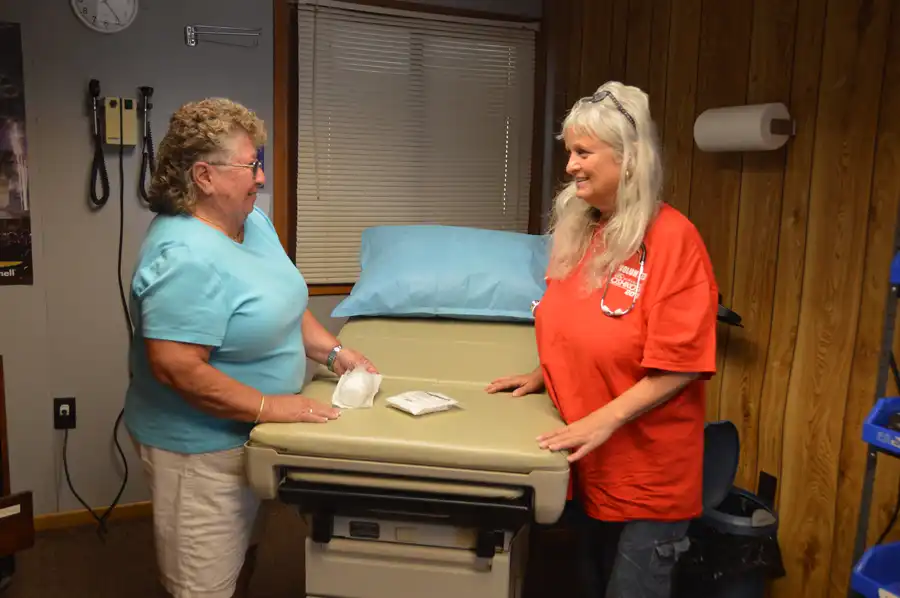First Aid Expects to Be Busy Due to High Temps
July, 2023 — With sunny weather and temperatures predicted to be in the high ’80s and low ’90s by midweek, it can only mean one thing. EAA AirVenture Oshkosh is here, and so is hot and humid weather.
It also means the two First Aid buildings on the Oshkosh grounds, manned by volunteer doctors, nurses, EMTs, and others, will be busy. Very busy.
Chair Connie Campbell, a 33-year volunteer, said the three most important things people should have while on the AirVenture grounds are sunscreen, a hat, and a water bottle.
“People should be hydrated before they get here, and drink lots and lots of water when here,” she said.
In fact, you should be drinking enough that you need to urinate at least once every three hours; if you’re not, you’re not drinking enough, added volunteer Gloria Zehnacker, of Delaware, a nurse for 50 years.
Campbell also recommended people wear lightweight, light-colored clothing; stay in the shade when possible; take rest periods and pace themselves, realizing some events are held more than once; and use the trams and buses instead of walking everywhere, especially on the hottest days.
“The heat takes a lot more out of you than you realize,” Campbell said. If you do get overheated, come to the First Aid buildings — located near the Camp Scholler Security & Assistance Center, and on the main grounds directly across from Lost and Found and near the AOPA tent — and use their misting tents to cool down. Some vendors also have misting stations, she added.
Each year about 600 people stop in the buildings for help, and another 6,000 stop by their porches for sunscreen, bandages, and to get treatment for other minor ailments. The most common problem last year was eye irritations.
“Never put sunscreen on your forehead,” Campbell said. “It will melt, and as you sweat, it will run into your eyes and sting.”
The volunteer nurses and doctors also do a lot of dressing changes, and treat lacerations, abrasions, insect bites, slivers, and ear issues, Campbell said. They also take blood pressure checks, and will store insulin-type medications that need refrigeration.
With a crowd in the hundreds of thousands, the First Aid workers also get people complaining of chest pains, as well as strokes, kidney stones, and gall bladder attacks, she added, noting that two to three ambulances are on the grounds at most times.
“If you need to be seen, come on in,” Campbell said. “But if it’s serious, don’t wait. Call 911.”
The volunteers at the First Aid buildings do “more triage and high-value assessing and recommending,” she said. “We’re here for first-line treatment, and then we refer people to local urgent-care centers and ERs.”

